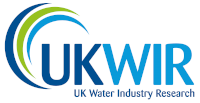BQ2 - How will we achieve zero leakage in a sustainable way by 2050?
Leaks from underground pipes are a reputational issue for all water companies. Since 1997, leakage has been reduced by 40 per cent. Even still, 20 per cent of all the drinking water produced is still lost – from companies’ pipes, homes and businesses.
Customers, regulators and Government expect water companies to reduce leakage much further. In England and Wales, water companies have already started to reflect those expectations and pledged to reduce leakage by a further 461 million litres per day, or 16%, between 2020 and 2025.
Leakage Innovation Heatmap
This work has been carried out by Jeremy Heath of SES Water, in his capacity as the programme lead for the Leakage Big Question. This dataset is an update of the original exercise that was carried out in 2019.
The purpose of this exercise is threefold:
1. To generate a UK industry-wide innovation heatmap for leakage, which captures the recent and current research programmes.
2. To assist in the development of the UKWIR Leakage Big Question, by identifying those areas where there is little research currently taking place.
3. To foster collaboration between Companies by highlighting those areas where multiple companies are working on similar projects.
It is important to understand that the projects lists are not exhaustive and inter-company comparison on the levels of leakage innovation are not valid. Some companies have been unable to provide their full project list due to contractual or non-disclosure agreements. Some companies have listed projects separately, whilst others have grouped them together (for example smart networks). This exercise has only sought to capture a small segment of all of the innovative work being carried out by water companies, in order to develop research plans and promote collaboration on leakage innovation.
If water companies wish to initiate contact to discuss the potential for shared projects, they can contact him direct, and he will be able to direct them to the relevant person in the other water company for that particular project. Supply companies, who may wish to discuss the benefit that they can bring to some of these projects, should use the existing channels to contact the relevant Company.
For excel version of the heatmap, click the download button using the link below.
